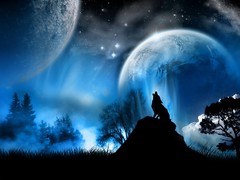
The shortlisted artists are:

Edward Burtynsky (Canada, 1955)
Nominated for Oil, 1997-2009
Nominated for Oil, 1997-2009
Edward Burtynsky is one of Canada’s most respected photographers. His imagery explores the intricate link between industry, nature and humanity’s impact upon the Earth. In his Oil series Burtynsky focuses on the oil industry as a source of dread and an ongoing endangerment of man’s habitat. Over a period of more than 12 years he has researched and photographed all facets of ’oil culture’. His remarkable work is included in the collections of over 50 major museums around the world, including the National Gallery of Canada, Ottawa and the Museum of Modern Art, New York.

Christian Als (Denmark, 1974)
Nominated for Kibera - The Shadow City, 2007-09
Nominated for Kibera - The Shadow City, 2007-09
Christian Als is a Danish photographer concerned with social, political and economic issues throughout the world. His career as a photojournalist has taken him to many places across the globe on both photographic and humanitarian projects, including Gaza, Haiti, Afghanistan and DR Congo. For this series, he was drawn to Kibera in Nairobi, Kenya - Africa’s second largest slum, where he documented its harsh living conditions and the hardships faced by its inhabitants. In addition to over 20 other awards, Als recently received an Honourable Mention in UNICEF Photo of the Year 2009.

Yeondoo Jung (Korea, 1969)
Nominated for Evergreen Tower, 2001
Nominated for Evergreen Tower, 2001
Yeondoo Jung is a Korean artist who has recently turned his hand to portraying Korean and Asian lifestyles through photography. His Evergreen Tower series focuses on a tower block whose identical 150 square foot living quarters provide a home for many people working in the city of Seoul. Jung’s photographs consist of family photos from the various apartments, which all share uncanny similarities due to the architectural structure of the building, and yet emphasise the visible differences between the families’ lives. In 2008 Jung received the Korean Ministry of Culture’s Today’s Young Artist Award.

Chris Jordan (USA, 1963)
Nominated for Midway: Message from the Gyre, 2009
Nominated for Midway: Message from the Gyre, 2009
Chris Jordan is a corporate lawyer turned photographic artist based in Seattle, USA, whose work explores the ’detritus’ of mass culture. In his most recent project, he documents a richly symbolic environmental tragedy with images of the plastic-filled carcasses of dead baby albatrosses on Midway Atoll in the Pacific. These completely undoctored images draw the viewer intimately into the horrors of global mass-consumerism, reminding us that the consequences of our unchecked growth extend to every corner of the globe. In 2007 Jordan was invited to participate in the Envisioning Change exhibition at the Nobel Peace Centre, Norway where he also won a Green Leaf Award.

Vera Lutter (Germany, 1960)
Nominated for her complete body of work
Nominated for her complete body of work
Vera Lutter is a German artist well-known for her large-scale pinhole photography. She turns whole rooms into enormous cameras and exposes images of the outside world onto wall-size sheets of photographic paper. Her work explores the beauty found within the destructive power inherent in many industrial advances, photographing shipyards, airports, abandoned factories, and other industrial sites that pertain to transportation and fabrication. Lutter’s photographs feature in many permanent collections, including New York’s Metropolitan Museum of Art and Whitney Museum of Art.

Mitch Epstein (USA, 1952)
Nominated for American Power, 2003-2008
Nominated for American Power, 2003-2008
Mitch Epstein is an American photographer whose work is concerned with the temperamental relationship between consumerist society in USA and the consequences of unbridled consumption. This series is the result of a five-year-long, 25-state project, examining the role of energy in America. Epstein juxtaposes images of suburban houses overshadowed by energy providers, with pictures of renewable energy sources in order to show that a healthier, more economical and compassionate way of life is possible. The American Academy in Berlin awarded Epstein the Guna S. Mundheim Berlin Prize in the Visual Arts in 2008.

Michael Wolf (Germany, 1954)
Nominated for Architecture of Density, 2005-2009
Nominated for Architecture of Density, 2005-2009
The work of the German photographer, Michael Wolf, uncovers and documents the subject of vernacular culture. In Architecture of Density, he investigates the enormous city blocks of Hong Kong, revealing a mesmerising abstraction in the facades of the buildings. On close inspection of each photograph, the anonymous public face of the city is full of rewarding detail, with large swatches of colour giving way to smaller pieces of people’s lives. Wolf has won first prize in the World Press Photo Award Competition on two occasions (2005 & 2010).

Guy Tillim (South Africa, 1962)
Nominated for Petros Village,2006
Nominated for Petros Village,2006
Guy Tillim is widely known for his photographs that document areas of the world plagued by conflict. His work as a freelance photographer in South Africa for the local and foreign media included positions with Reuters between 1986 and 1988, and Agence France Presse in 1993 and 1994. This series documents the lives of the inhabitants of Petros Village, Malawi - a community faced with a precarious future, in the wake of crop failure. Among other awards, Tillim received the first Robert Gardner Fellowship in Photography from the Peabody Museum at Harvard University in 2006.

Nyaba Leon Ouedraogo (Burkina Faso, 1978)
Nominated for The Hell of Copper, 2009
Nominated for The Hell of Copper, 2009
Nyaba Leon Ouedraogo turned to photography after a serious injury prevented him from pursuing his career as an athlete. His approach, which blurs the lines between photojournalism and documentary work, involves, in his words, "not showing the images for what they depict, but for what they transmit". The Hell of Copper examines the illegal ’e-waste’ trade in Accra, Ghana, where young Ghanaians disassemble and burn old computers in order to extract copper which can then be sold. Ouedraogo is the co-founder of "Topics Visual Arts Platform" and is based in France.

Stephane Couturier (France, 1957)
Nominated for Melting Point, 2005
Nominated for Melting Point, 2005
Stephane Couturier began his career as an art photographer in Paris in the early 1990s. His work concentrates on the process of transformation. The Melting Point series documents the various stages of production at a Toyota assembly plant in Valenciennes (France), in large photographs teeming with colour and movement. These images document the perpetual movement of industry - rationalised, disembodied, automated and more and more subject to the silent logic of profit. Couturier was awarded the Nicephore Niepce prize in 2003.

Taryn Simon (USA, 1975)
Nominated for An American Index of the Hidden and Unfamiliar, 2007
Nominated for An American Index of the Hidden and Unfamiliar, 2007
Taryn Simon is currently an assignment photographer for the New York Times Magazine. Her acclaimed series, An American Index of the Hidden and Unfamiliar represents an inventory of what lies hidden and out-of-view within the borders of the United States; from "cryopreservation’ units in Michigan, to nuclear waste storage facilities in Washington. The work emphasises the capacity of the annotated-photograph to engage and inform the public. Simon’s work is contained in various permanent collections including the Metropolitan Museum of Art, New York, the Tate Modern, London and the Centre Pompidou, Paris.

Thomas Struth (Germany, 1954)
Nominated for Paradise, 1998-2006
Nominated for Paradise, 1998-2006
Thomas Struth is one of the artists credited with establishing photography as a major medium in contemporary art. Struth studied under Gerhard Richter and Bernd Becher at the Kunstakademie Duesseldorf (1973-80), moving from painting to photography and thus becoming part of a new generation of photographers known as the "Becher School’. After beginning in 1976 with black-and-white studies of deserted streets, and bird’s-eye views of cities such as Duesseldorf, Berlin, Paris, London, and New York, he turned to colour, including peopled street scenes in the Far East as well as flowers, deserts, and primeval forests.The Paradise series consists of photographs taken in the jungles of Australia, Japan, and China, as well as in the California woods, containing a wealth of delicately branched information, which makes it almost impossible to isolate single forms. According to Struth they present a kind of empty space: emptied to elicit a moment of stillness and internal dialogue. In 1997 Struth was awarded the Spectrum International Prize for Photography.

















